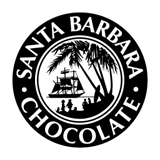The term "single origin chocolate" refers to chocolate made with cacao beans from a single geographic area, such as a country, region, or group of small farms. Many people have expressed interest in this type of chocolate because of its ability to capture the soil, climate, and farming practices of its origin. Many cacao beans are sourced from diverse smallholder farms where trees grow in household gardens, providing a natural variation in flavor and character as compared to the controlled environments provided by major plantations.
Santa Barbara Chocolate prioritizes transparency and quality while staying conservative about origin labeling. As a wholesale melting chocolate suppliers, we mostly source from brokers who work directly with farmers' cooperatives. This technique encourages sustainable cultivation while maintaining a steady supply of high-quality beans.
Why Single Origin Labeling Requires Caution?
Many companies use “single origin” claims as marketing tools, often with limited understanding of the actual cacao sourcing. The reality is more complex.
The cacao we source is typically grown on small farms—family homes scattered along a rural road. Trees grow in naturally diverse conditions, and beans are sold to local co-operatives. These co-ops aggregate beans from nearby areas and sell to trusted brokers. Without DNA testing, it is not feasible to identify a specific farm or genetic variety on a large scale, even though the broad region can be determined.
This is why we label some of our chocolates as “blends” associated with a region, such as Ecuadorian Blend or South American Blend. These mixes retain regional features while providing a more realistic and practical picture of the supply chain.
Ethical Trade Certifications
We work with brokers who facilitate ethical trade through certifications and programs that ensure traceability and fair conditions for farmers. Some of these include:
- UTZ Certified
- Rainforest Alliance (RFA)
- Cocoa Trace
- Serapase
These projects enhance farmer livelihoods and promote environmental conservation. While certification may apply in part or whole to particular products, our long-term goal is to source ethically and sustainably through responsible supply chain partners.
Types of Single Origin and Regional Blend Chocolates
We provide couverture and unsweetened chocolates from a variety of cocoa suppliers. Key types in our range include the following:
Belgian Dark Chocolate Couverture
Origin: Ecuador – South American Blend
This smooth and refined chocolate has floral and nutty undertones, reflecting the blend of cacao from Ecuador and nearby regions. It’s ideal for ganache, truffles, and molding.
Rainforest 100% Unsweetened Dark Chocolate
Origin: South American Blend
Strong, untempered chocolate that is free of lecithin and sugar. Made from a combination of cacao beans from South America, it has a rich cocoa flavor and works well in baking and other culinary applications where sugar is not preferred.
Learn about Rainforest 100% Unsweetened Chocolate Cacao and Organic Audits
Vietnam 73% Dark Chocolate Couverture
Origin: Ben Tre, Mekong Delta, Vietnam
This couverture chocolate from a single origin has a mild fruit acidity and hints of raisin and dried cherry. The cocoa is grown in the Ben Tre region, which is known for its nice weather and rich soil.
Shop Vietnam 73% Couverture Chocolate
Sourcing Challenges and Realities
Most cacao is farmed by smallholder farmers around the world. Cacao farming is more locally oriented and less regulated than commercial crops. Instead of growing in tidy rows, cacao plants frequently coexist with other crops like papaya or bananas.
These farmers usually don’t have access to processing facilities or packaging infrastructure, so they work with local co-operatives that provide support, fermentation, drying, and storage. From there, the beans are sold to export brokers.
Given this, our labeling focuses on regions rather than specific farms. We prioritize accuracy over marketing language and aim to offer transparency to our customers.
Taste and Application
Single origin chocolate can be very different depending on where it comes from, the type of beans used, and how it was fermented. Some general traits that vary by region are:
|
Region |
Flavor Notes |
|
Ecuador |
Floral, nutty, balanced acidity |
|
Vietnam |
Red fruit, citrus, subtle tannins |
|
South America (Blend) |
Bold cocoa, earthiness, mild bitterness |
|
West Africa (not featured) |
Robust, woody, chocolate-forward |
These different flavors can be helpful, depending on what you want to cook. The Vietnam origin, for example, goes well with berry reductions or red wine desserts, while Ecuadorian mixes are suitable for typical chocolate mousse and couverture applications.
Browse Related Chocolate Types
Whether you’re working on artisan bonbons or baking chocolate desserts in large quantities, we offer a wide range of chocolate products suitable for different uses:
- Organic Chocolate
- Couverture Chocolate
- Vegan Chocolate
- Bulk Chocolate
- 100% Pure Cocoa
Choosing Reliable Chocolate Suppliers
When sourcing chocolate for manufacturing, baking, or resale, it’s essential to work with suppliers that are transparent about sourcing and production. At Santa Barbara Chocolate, we continue to offer detailed insights into our supply chain, regional blends, and ethical sourcing practices.
We focus on honest communication, consistency, and quality so that our clients—from pastry chefs to food manufacturers—can rely on our chocolate in every application.
